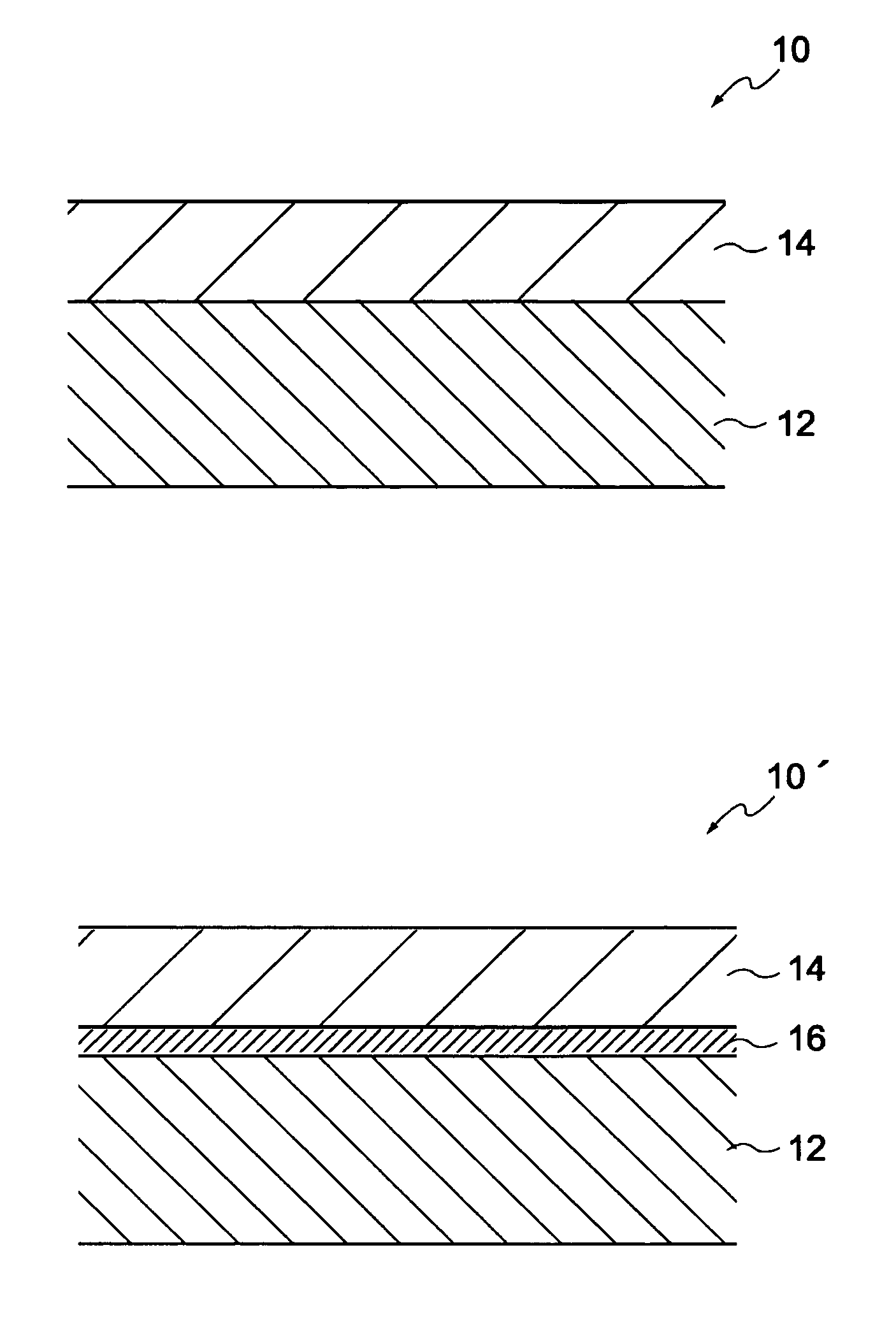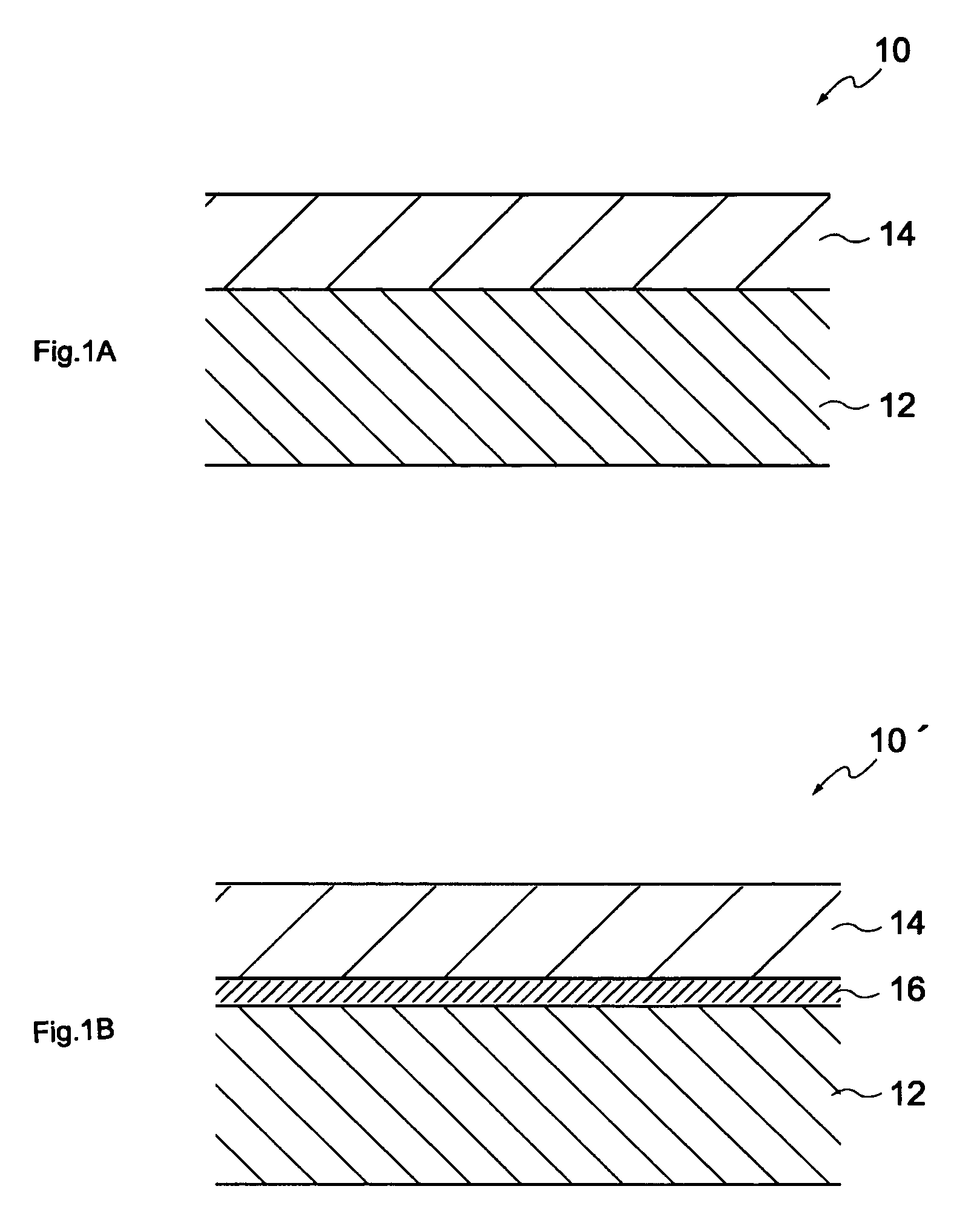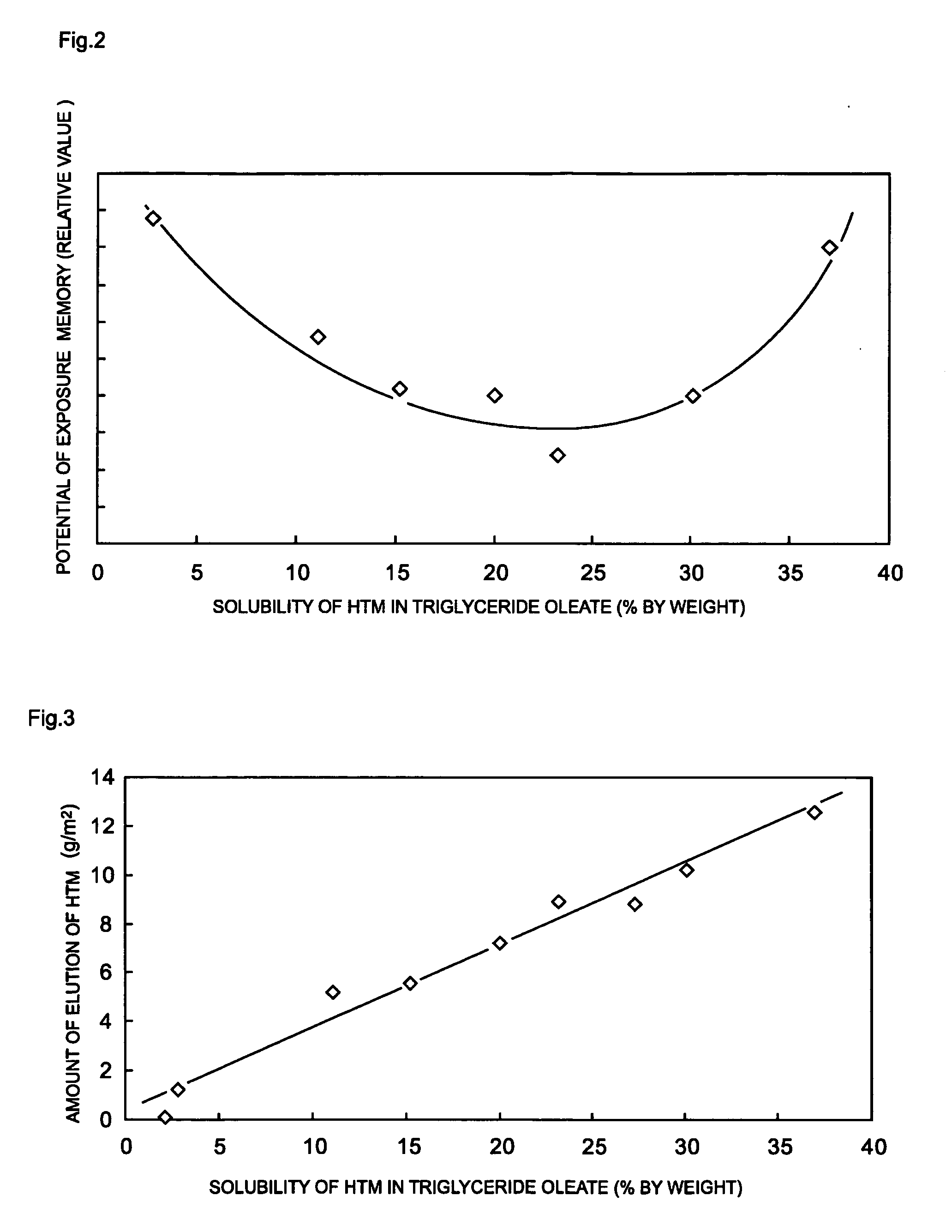Electrophotographic photoconductor and image-forming apparatus
a photoconductor and electrotaxy technology, applied in the direction of electrotaxy, electrotaxy, instruments, etc., can solve the problems of reducing image characteristics, residual electric charges can be generated on photosensitive layers after, and the desired image characteristics cannot be constantly obtained, so as to prevent the generation of exposure memory, reduce the number of components in the apparatus, and improve the crack and wear resistance
- Summary
- Abstract
- Description
- Claims
- Application Information
AI Technical Summary
Benefits of technology
Problems solved by technology
Method used
Image
Examples
first embodiment
[0039] A first embodiment of the present invention is an electrophotographic photoconductor comprising a photosensitive layer containing at least a charge-generating agent, a hole-transfer agent, and a binder resin on a conductive substrate, where the hole-transfer agent has a solubility of 5 to 35% by weight with respect to triglyceride oleate and the photosensitive layer contains a compound represented by the following general formula (1) as an additive.
[0040] Hereinafter, a mono-layer type electrophotographic photoconductor as the first embodiment of the present invention will be specifically described.
1. Mono-layer Type Electrophotographic Photoconductor
(1) Basic Configuration
[0041] As shown in FIG. 1A, a mono-layer type electrophotographic photoconductor 10 is constructed of a single photosensitive layer 14 mounted on a conductive substrate 12.
[0042] The photosensitive layer 14 may be formed by coating the surface of the conductive substrate 12 with a coating solution an...
second embodiment
[0151] A second embodiment of the present invention is an image-forming apparatus that comprises an electrophotographic photoconductor of the first embodiment and an electrification device for carrying out an electrostatic charge process, an exposure light source for carrying out an exposure process, a developing device for carrying out an image development process, and a transfer device for carrying out an image-transferring process, which are arranged around the electrophotographic photoconductor. In addition, such an image-forming apparatus has no unit for electricity neutralization.
[0152] Furthermore, in the following description for the image-forming apparatus, it will be described with reference to an example that uses a mono-layer type photoconductor as an electrophotographic photoconductor.
[0153] As shown in FIG. 7, around an electrophotographic photoconductor 31, an electrification device 32 for carrying out an electrostatic charge process, an exposure light source 33 for...
example 1
1. Manufacture of Electrophotographic Photoconductor
[0159] A coating solution for preparing a photosensitive layer was prepared by dispersing and mixing 4 parts by weight of an X-type metal-free phthalocyanine (CGM-A) represented by the general formula (8) as a charge-generating agent; 50 parts by weight of a compound (HTM-1) represented by the general formula (12); 30 parts by weight of a compound (ETM-A) represented by the general formula (37) as a electron-transfer agent; 100 parts by weight of a Z-type polycarbonate resin (BD-1) (weight-average molecular weight: 35000) represented by the general formula (43) as a binder resin; and 4.5 parts by weight of a compound (BD-2) represented by the general formula (3) as an additive together with 800 parts by weight of tetrahydrofuran by means of a ball mill for 50 hours.
[0160] Next, the coating solution thus obtained was applied on two cylindrical aluminum tubes (one of 30 mm in diameter and 254 mm in length and the other of 16 mm in...
PUM
 Login to View More
Login to View More Abstract
Description
Claims
Application Information
 Login to View More
Login to View More - R&D
- Intellectual Property
- Life Sciences
- Materials
- Tech Scout
- Unparalleled Data Quality
- Higher Quality Content
- 60% Fewer Hallucinations
Browse by: Latest US Patents, China's latest patents, Technical Efficacy Thesaurus, Application Domain, Technology Topic, Popular Technical Reports.
© 2025 PatSnap. All rights reserved.Legal|Privacy policy|Modern Slavery Act Transparency Statement|Sitemap|About US| Contact US: help@patsnap.com



